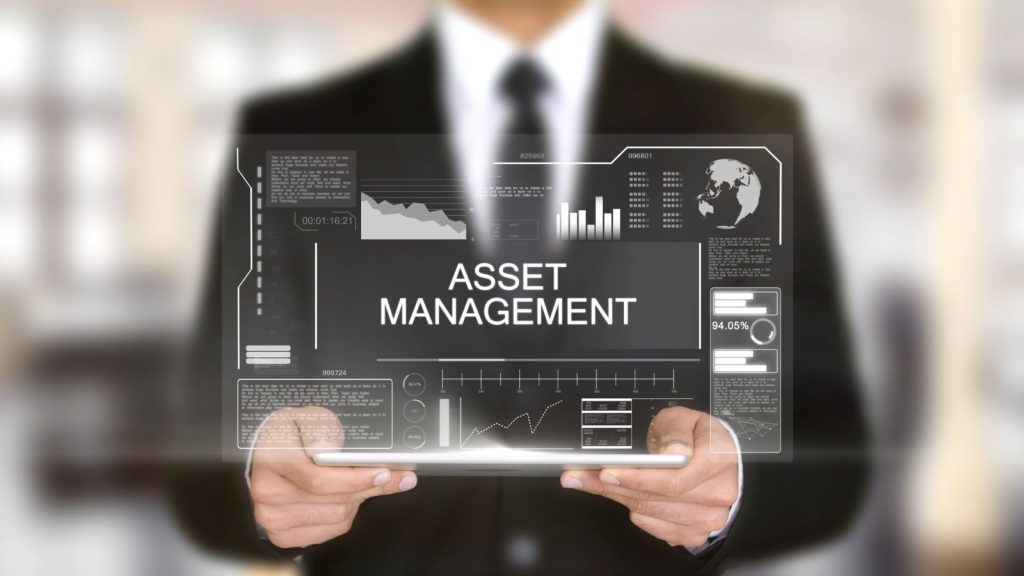5 Tips to Organize Your Digital Assets for Success

In this Article
The two major concepts I can draw from this topic include organization and digital assets. How then do you link the two terms together? It’s the 21st century and everything has gone digital. This is why your digital assets are a valuable tool that can help your business gain a competitive edge.
There is no marketing program that can be successful without organization. It even becomes more important when it comes to digital assets of a company. It’s necessary to take control of your branded digital assets. This is especially true as we increasingly focus on the digital world. Access it quickly and easily to create a positive customer experience.
One thing that’s certain is product information is only valuable when structured, accurate, and easily accessible. This is where digital asset management comes into play, making assets easily available to users and employees alike in a way that supports business processes efficiently and effectively.

Digital Assets 101
Okay, so we have probably come across the term digital assets, perhaps in passing, and we do not know what it really is all about. Don’t worry; it will be broken down for easy understanding.
An asset is a thing of value. They are important because they bring in the bucks, either short term or long term and they are essential to achieving your goals, strategies, and objectives.
In the simplest terms, digital assets are assets that are digital. They include logos, pictures, graphics, audio files, videos, animations, presentations, relevant user rights, business websites or blogs, processes, apps, inventory, intellectual property, online marketing materials, design files, documents, among others that are valuable to a company.
The list of resources that exist online for an eCommerce business can’t be exhaustive. Some of them you know and some you probably don’t know. At the heart of it all, digital files contribute to online sales success as some have personal value and others, real monetary value.
The distinguishing factor is that they contain information through the metadata attached to them that brings value to the organization.

The Solution: Digital Asset Management (DAM)
DAM comes as an answer to the problems of storage and retrieval of digital resources. Brands are running to its wide arms in the hopes of optimizing their content across the lifecycle of their digital files in an efficient manner. Here, large amounts of an organization’s digital resources are efficiently stored, organized, managed, accessed and distributed from a central repository.
It is a safe way to house and easily retrieve them because it is cloud-based. Furthermore, it gives your organization a professional outlook and helps you get the most out of your resources.
Benefits of Using DAM
Do you remember the frustration you felt when looking for a lost file or folder and you didn’t find it? I bet it was quite annoying because it was a huge waste of time that would have been used for more productive activities. Organizing our resources saves us the hassle of combing through millions of files and offers us an easier and simpler way to retrieve and share our digital files across various platforms and users.

Brand Consistency Across Channels and Campaigns
This is very important in the life of a brand. Often times, consumers are quick to purchase from brands they know and trust. Without consistency of information across sales channels, there will be a disconnect between brands and customers. Thus, the use of organized resources will help pass across a unified message to customers regardless of the platform used.
There is data security as a result of the control the system offers for the digital assets used since access is controlled by administrators, reducing the risk of information leak. It also facilitates the proper control and management of a brand’s identity by managing global and local versions across platforms for customer engagement.

Maximize Internal Process Efficiency
The proper organization makes internal processes faster and more efficient and gives room for employees to concentrate on core functions that bring in the revenue, thus reducing workflow redundancies to the barest minimum. Furthermore, team collaboration is encouraged because it becomes quite easy to access they need when they need it, helping the fast flow of information for a more competitive edge.
Save Time and Money
I cannot overemphasize this. Time spent in searching for files and folders as well as the recreation of missing resources are saved. It also leads to quick access to files when needed, which improves the overall quality of your brand communication strategy. It also removes the cost associated with the retrieval of information and subsequent losses. Old files can be reused with minimal changes made.
Easy Accessibility
The organization makes it easily available anytime and anywhere. With central storage, arrangement of resourceswith metadata and tags becomes far easier. These help by making files easily accessible to authorized users.
Enable Proper Systems Integration
Organized digital assets ease integration of information with other management solutions like Content Management Systems (CMS), Customer Relationship Management (CRM) solutions, and Product Information Management Solution (PIM). This will help your company roll custom content out across different digital channels. Content production, sharing, and distribution time and costs will become more efficient as these easily accessible systems store information centrally.

Tips for Organizing Your Digital Assets
Unlike before, the amount of data generated in a day is a lot, hence the need for storage and organization. No matter the industry you are operating, you will have a need for digital assets, and businesses who can take advantage of them organization can become more effective and efficient in their operations and overall growth.
The benefits of asset management discussed above gives us a clear understanding of the need to organize our digital resources. In summary, it increases workflow efficiency, saves time and cost, reduces information clutter and gives you control over information access. The following tips can be applied to their organization;
Tip 1: Create a Comprehensive List of Assets
There should be proper documentation of all the digital resources your company owns. This should be the first step as it will provide an in-depth understanding that will be needed for each individual, team, and department. The proper audit of your file also sets the foundation for the creation of an organizational structure for your files.
Are metadata attached to each of the digital assets? What are the storage mediums existing for your digital assets? What file types are in existence? Where can they be accessed from? All these and much more will help a firm identify how and why they are used and those in need of improvement.
The creation, management, and organization require the collaborative efforts of departments and staff. This is because the structure your DAM will operate on should involve the input of teams that will have access to it and make use of the system. The needs of each team member will be discussed and the best vendor that meets the requirements will be chosen. If an organization fails to do this, the user adoption rate will be slow.
The breadth of your digital resources will also help in designing the scope of your preferred DAM system. Furthermore, the proper audit will help you manage your digital marketing strategies and expose weaknesses in your protection plans.
Tip 2: Use Folders
The use of folders can help render a consistent storage. Your folder structure is highly important. There should be different folders for different profiles to be assigned to the digital asset. Folder structure is important in your digital files management.
Beware of spaces, underscores and special characters when naming your folders. A slight space at the beginning of a folder can cause difficulty in its location. Furthermore, it can lead to the duplicity of folders where another folder is named correctly because the existing one had special characters which made it unable to appear in its usual place.
Folders can also be a great tool at your disposal when applying keywords. Some digital asset management systems use the folders on which data is stored to generate keywords. This is why names of folders should be carefully put into consideration because keywords will be applied based on it.
Every file should have its unique name that is indicative of its content in a clear and consistent manner. The goal of folders is to ensure that files get easily found when being searched for. There should not be an overlap in contents of your folders. The same resource should not have separate folders so that information about it can be quickly accessed and easily understood. Furthermore, you can see updates to the information as everything all the attributes will be in the same folder. DAM sure makes this easy because it allows single-source updates where updating the master document automatically updates the information wherever it is, with no extra effort needed.
Having a lot of individual folders creates difficulty in storing files, especially when they are unclear. Instead, make use of subfolders to further categorize them within a folder and create a logical file structure. Always remember that it is not enough to have folders and well-organized files; it is also important to make cleaning them up a habit to prevent you from having a lot of outdated assets.
Tip 3: Label Your Assets with Metadata
Metadata, just as the name implies, is a data about a data about a data. Which makes it easy for users to manage data more efficiently. By data, we refer to images, videos, audio files and so on.
Metadata is a layer of information useful for digital asset management. This is because it helps users find and make use of information sources. With large databases growing at the speed of light, metadata is the key to the problem of retrieval of information.
Using images, for example, metadata gives more information than is apparent in the image itself. The name of the folder it’s in, the image size, and its assigned tags are not readily apparent.
This goes to say that each image should have appropriate keywords attached to it that is descriptive of the image. Keywords can pass information about the image category, color, and any other description that can help your firm in its organization. All these categorizations will help you in finding them when you need them.
Metadata is highly important for quick searches of any form. It is important to know what metadata to attach. Keywords are very important because digital assets are not similar to each other and have intricacies that need to be properly considered. It will be advantageous to the company to use folders to apply relevant keywords. Think about your physical assets and how they each need to be labeled with unique tags and keywords for easy identification and retrieval. The same is applicable to your digital resources because of their differences.
Metadata keeps current and future members of your team in the know about your content assets. Also, saving time knowing how to use these is better than muddling through thousands of files. The addition of metadata makes them more accessible and easier to manage.
Tip 4: Backup the Backup
No matter how crazy it sounds, it is important to have a backup of your backup. You cannot be too careful when it comes to your digital resources. Their safety is important. Employees typically only think to back up files once they’ve already lost them. We tend to forget that the more frequently we backup files, the lower the risk of losing them.
Almost all digital asset management systems have backup features infused in them. Despite this feature, it is important to have a backup of the backup. You really cannot be too careful with your digital assets. There should be a disaster recovery plan on board in the event of one.
Hold on to different versions and alternates to track the evolution of a particular asset. Constantly update and back up the digital inventory.
However, care should be taken to ensure that there is control of the backup process to reduce the backup of the files on unauthorized systems, further exposing the information within to misuse, theft and so on.

Tip 5: Control Digital Asset Access
They should not be a dumping ground for every user. This is why it is important that all users have the correct level of access in your DAM. This will prevent the problems bound to occur otherwise.
The use of a DAM system affords an organization the benefit of a centralized control especially for numerous amounts of digital assets. This goes to show that your numerous digital assets can be accessed from a central repository but restricted by user group roles.
You cannot talk about digital asset management systems without the issue of roles and permissions coming up. This is because it’s necessary to control how certain digital resources exist within the system.
A DAM system assigns one or more roles to users which has certain permissions attached to it as a guide for one’s interaction with the asset. Set up user roles and permissions to enforce brand control and ensure brand consistency. Roles and permission provide user restrictions so they can’t access the wrong assets accidentally. They also help determine the level of access attributable to a user in their interaction.
A DAM system assigns access to users in line with various tasks like previewing assets, ability to upload, delete, order, edit metadata, and so many more. While some may have the right to some tasks, some other users may have restricted access.
In this way, uniformity prevails as users obtain permissions only within specific roles. In other words, users will only have access to the information they need to be able to perform their job function.
Conclusion
How is your existing digital asset management practice like? Do you worry about the security of your digital assets? Can you access them easily from anywhere? Do you spend too much time trying to retrieve files and folders? If the answers to these questions and much more are not promising, there is a need for a quick solution in organizing your digital resources.
With the increase in content marketing as a customer engagement strategy, the need for digital asset management is also increasing. Customers demand better compelling product content and companies are finding it difficult to sort through the large quantities of data files they have. To escape the chaos that is sure to accompany large databases, digital asset management should be incorporated
Your digital files are more difficult to identify because their value may be unclear. Are these worth money? Many businesses today can’t boast of having DAM in place, which makes it difficult to know which assets they have. Furthermore, why do they even exist? Finally, where and how can they be used most effectively?
Content is king in today’s competitive marketplace and proactive companies are leveraging on this. They are crucial in the production of compelling content that has the power to engage customers; hence the need for its proper organization. It is this simple; the more organized your digital assets, the more effective your brand’s content marketing strategy.
They take resources in its creation. Furthermore, it can be difficult to find the content you need when you need it. Management systems use keywords, tags, and folders to make locating them easier. This is why it’s important to know easy and timely user retrieval and accessibility are critical. You can also leverage metadata properly to ease digital asset management.
The fact still remains, your digital resources will only grow in number. So take care to maintain your digital asset management system properly. The reward is definitely worth the resources you’ll invest.
Now that you know how to organize your digital assets centrally, click here to see what Catsy can do for you..
Product information management (PIM) is a catalog software tool built to speed products to market.
Digital asset management (DAM) is a software used to organize and enrich digital assets.




